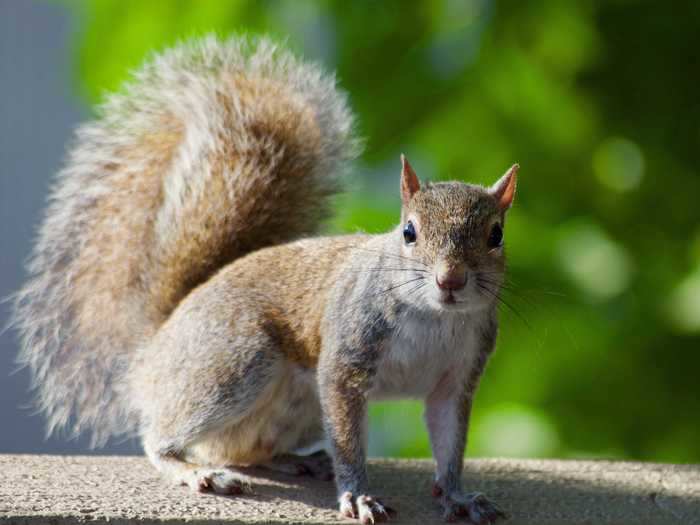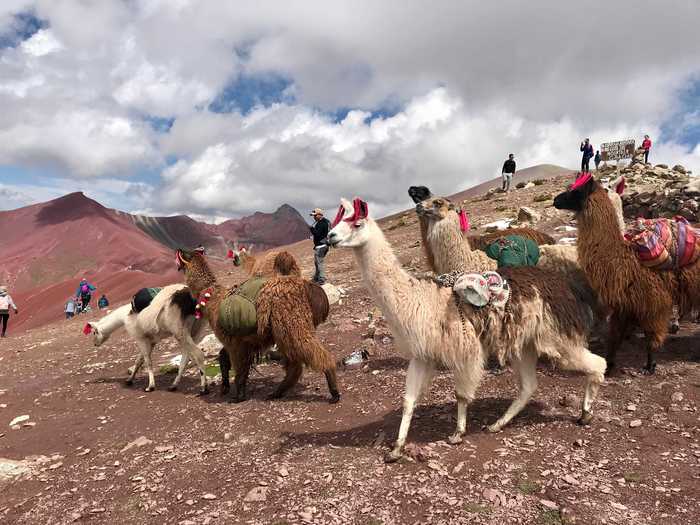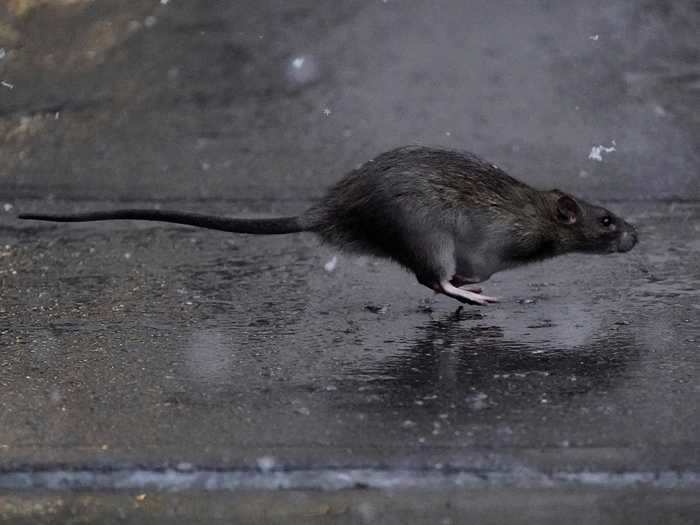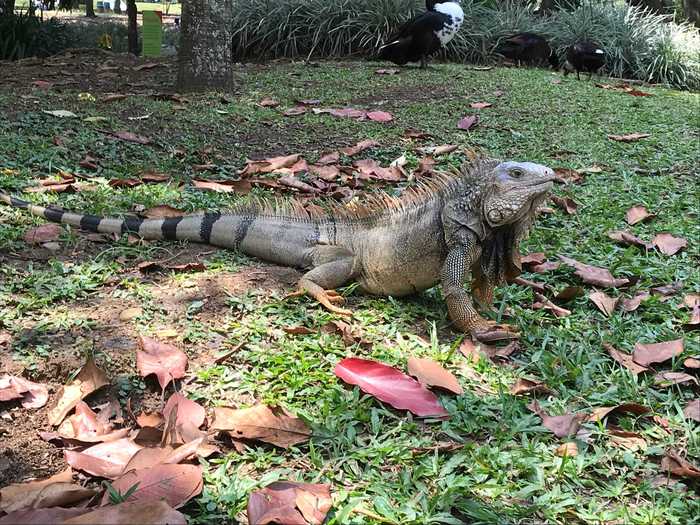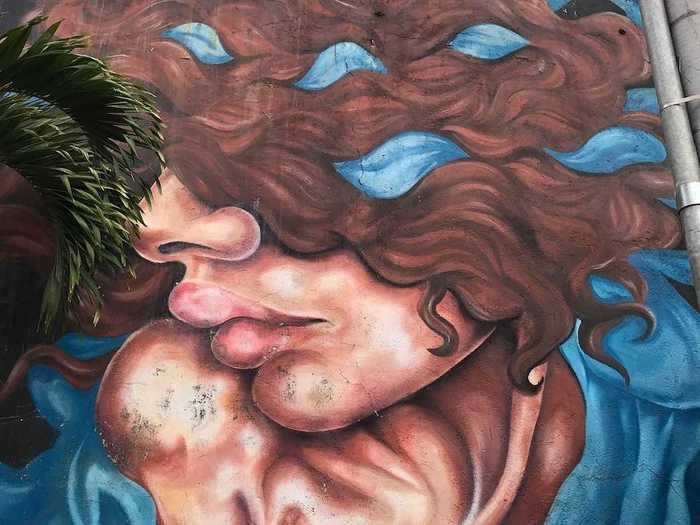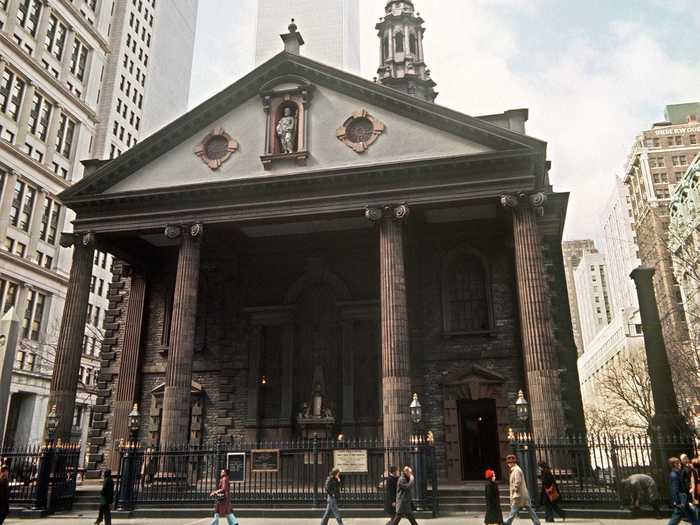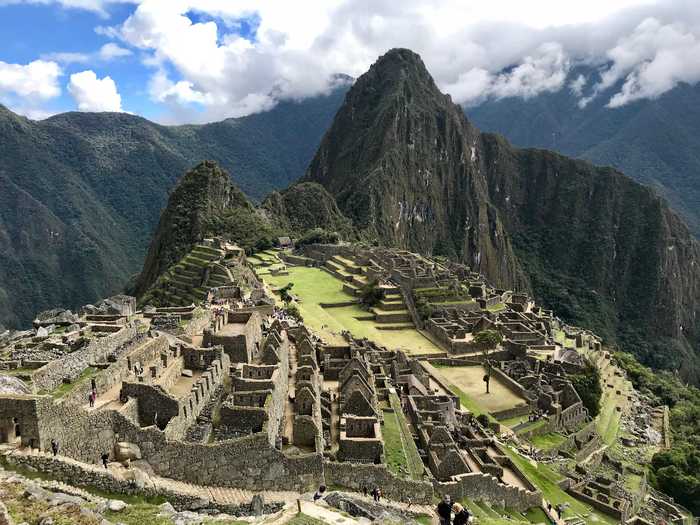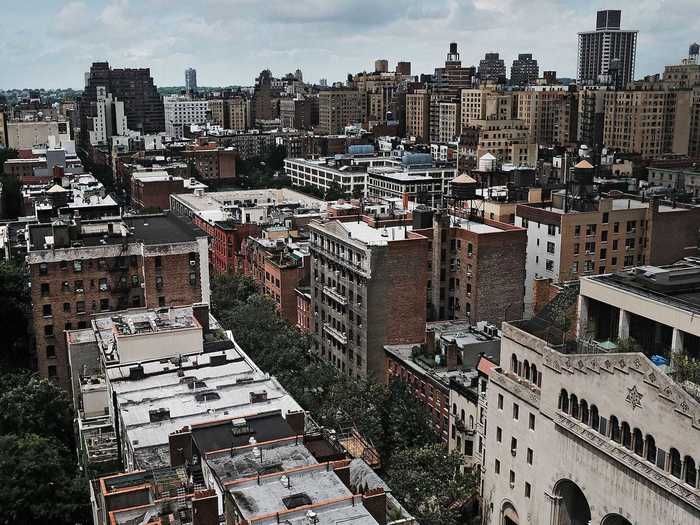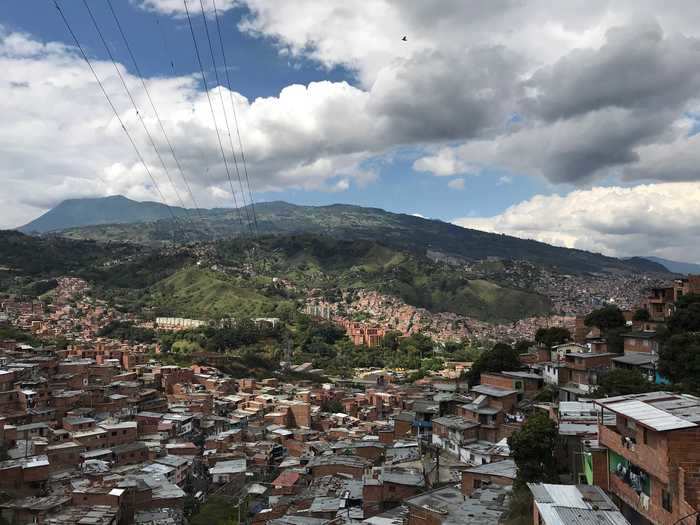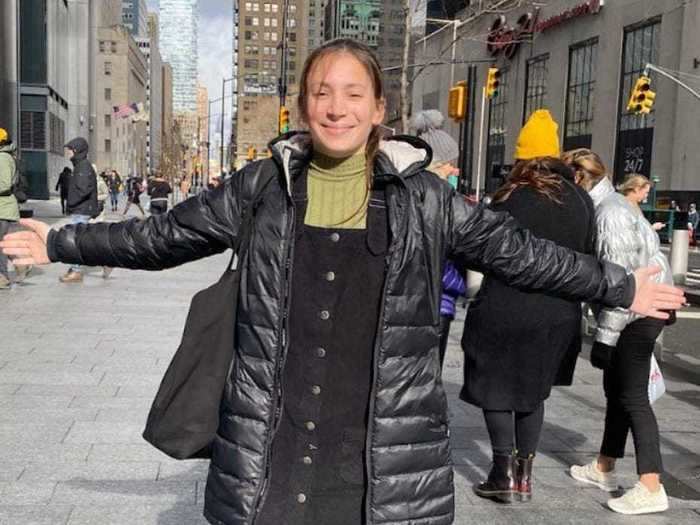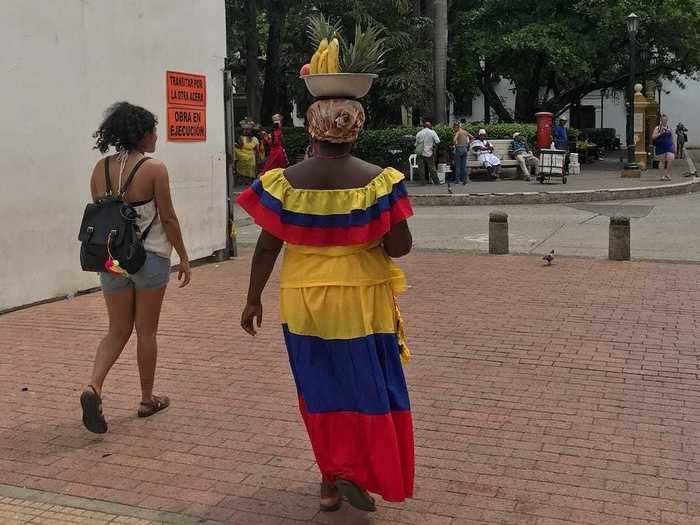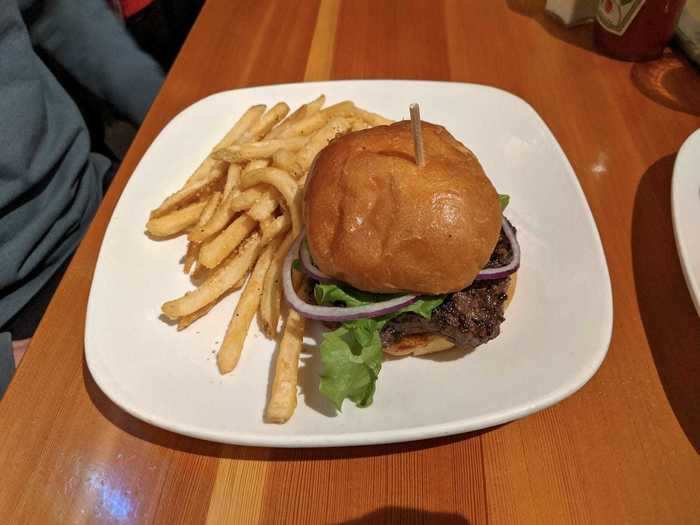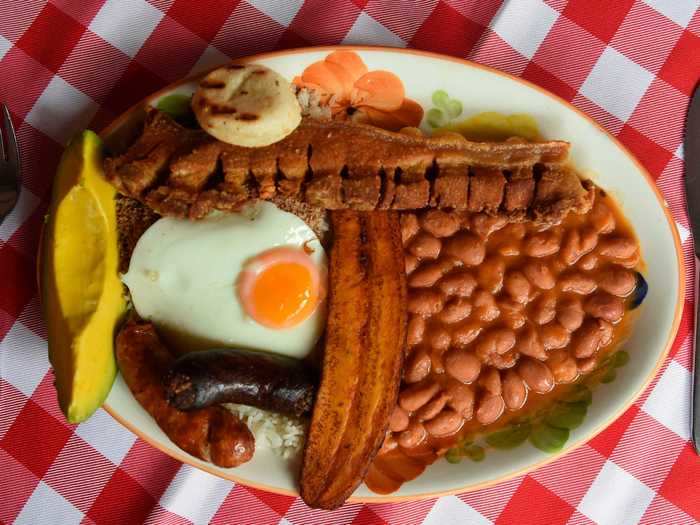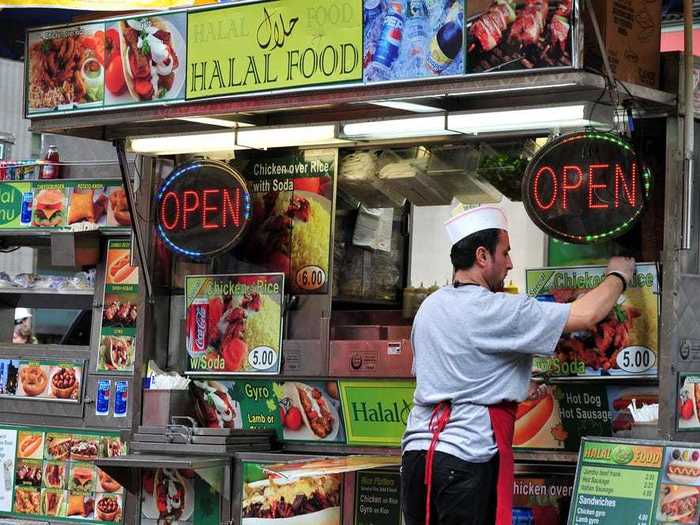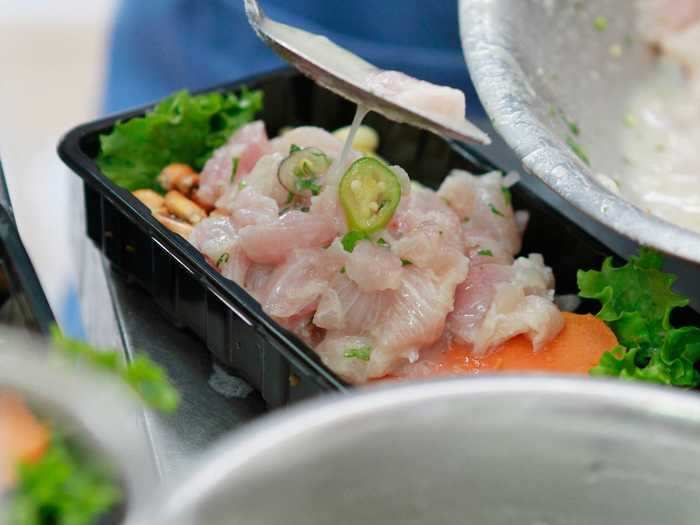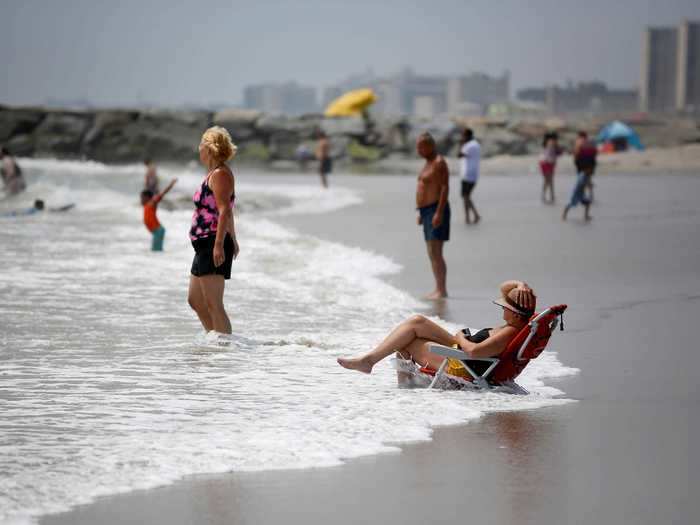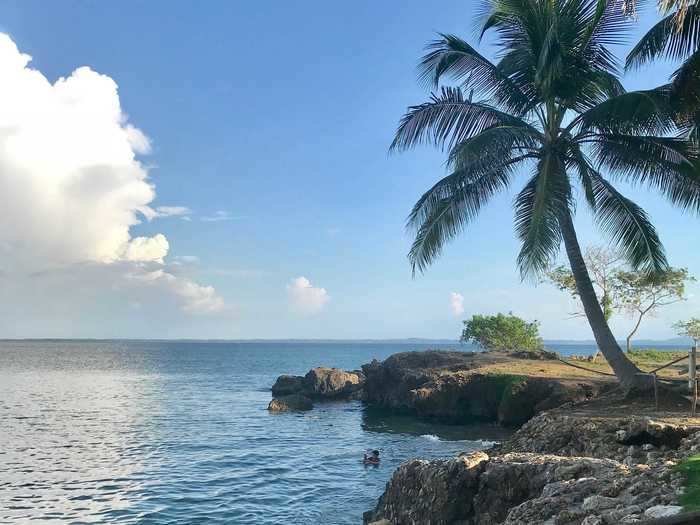Me in South America and New York City.Zoe Ettinger
- In 2018, I left New York City for six months to travel through Colombia, Ecuador, Peru, and Bolivia.
- I found that the food, clothing, architecture, wildlife, and landscapes were completely different to those I had experienced living in the US.
- In Peru, one of the most popular dishes is ceviche. Many street carts charge the equivalent of $3 for it — far cheaper than many meals in NYC.
- In the city streets of Colombia and Ecuador, I would see iguanas. In NYC, it's mostly rats and squirrels.
- Visit Insider's homepage for more stories.
In 2018, I moved from New York City to South America. I had spent months saving up for a six-month-long trip through Colombia, Ecuador, Peru, and Bolivia.
Though I anticipated cultural differences, I was still surprised by many things that I found in each country, from the traditional street meal of ceviche to the abundance of iguanas and llamas roaming throughout different cities.
Here are the biggest differences I found after leaving the US for South America.
Read the original article on
Insider
For some context, it's about as common to see a squirrel in New York as it is to see a llama in Peru.
A squirrel.
Brennan Garcia/Shutterstock
Though not as common as rats, New York is also full of squirrels. According to New York City's first squirrel census, there are 2,373 squirrels in Central Park alone, and you'll definitely never see one on a menu.
Llamas are very common in Peru and Bolivia, and can be seen in both mountains and cities working as pack animals.
Llamas in Peru.
Zoe Ettinger
In South America, llamas are native to Peru, Chile, Bolivia, and Argentina. According to Culture Trip, they are the oldest domesticated animal in the world. Llamas are used as pack animals — but it also wasn't unusual to see llama steak on the menu at restaurants in Peru or Bolivia.
In New York City, rats are the most common pest. It's nearly impossible to spend a day outdoors in the city and not see a rat.
A rat runs across a sidewalk in New York City.
Carlo Allegri/Reuters
Though urban legends say that there's as many rats as people in New York City, researchers estimate the rat population to be at about 25% of the city's human population. In other words, there are about two million rats in NYC.
In some parts of South America, iguanas are considered pests — they hang around the streets and eat fallen food. It sounds eerily like a standard NYC pest ...
An iguana in Colombia.
Zoe Ettinger
Though it's well known that there are many iguanas in Ecuador's Galápagos Islands, there are also many in the Ecuadorian city Guayaquil, home to the aptly named Iguana Park. It's filled with hundreds of the scaly creatures.
In New York City, graffiti is illegal, and tags are often washed off soon after they're made.
A graffiti-covered wall in NYC.
CribbVisuals/Getty Images
In New York City, creating graffiti is a Class A misdemeanor punishable by up to one year in jail.
The street art in South America is very colorful and in many places, graffiti is legal.
Street art in Medellín, Colombia.
Zoe Ettinger
In Bogotá, graffiti became legal following a tragedy. In 2011, police killed 16-year-old Diego Felipe Becerra while he was tagging his signature, Felix the Cat.
His death sparked massive protests throughout the city, which eventually led the government to downgrade graffiti from a crime to a violation, and eventually legalized it altogether.
St. Paul's Chapel is one of the oldest buildings in New York — but it only dates back to 1766, about 300 years after Machu Picchu was built.
St. Paul's Chapel in New York City.
Dieter Klar/Getty Images
St. Paul's Chapel is located at Broadway and Fulton Street, and is part of the Trinity Church Wall Street complex. It remains home to an active worshipping community and sees over one million visitors a year.
Pretty much everything in NYC dates back to the colonial era — South America has much older structures in place.
Machu Picchu, built during the 15th century, is hundreds of years older than the oldest buildings in New York City — you can see over half a century's worth of history just by walking around.
Machu Picchu in Peru.
Zoe Ettinger
According to History.com, Machu Picchu is believed to have been built in the 15th century, at the height of the Incan Empire. It is also believed to have been abandoned about 100 years after its construction, mostly likely coinciding with the time that the Spanish conquistadors arrived in South America.
In New York City, the buildings are much taller and the architecture styles are more diverse.
Manhattan, New York.
Spencer Platt/Getty Images
New York City has ever-changing zoning laws, which have alternately allowed and banned certain types of buildings. According to the New York Times, "In Manhattan alone, roughly two out of every five buildings are taller, bulkier, bigger or more crowded than current zoning allows."
In Colombia, the buildings aren't very tall, and much of the architecture is in the same style.
Medellín, Colombia.
Zoe Ettinger
Medellín, pictured above, is the second most populous city in the country after Bogotá. During famed drug kingpin Pablo Escobar's time, it was a very dangerous place with a murder rate that peaked at 381 murders per 100,000 people.
Today, however, it is much safer, and has since become a medical business center and tourist destination.
In New York City, most people dress in muted colors, like this outfit I am wearing in downtown Manhattan.
Me in downtown Manhattan.
Frank Olito
Valerie Steele, the director of The Museum at the Fashion Institute of Technology and author of "The Black Dress," told the New York Times, "It's only some New Yorkers who wear black, but it's the kind of people popularly identified with this city — fashion people, artists, and hipsters."
People dressed very colorfully in Colombia. It wasn't uncommon to see someone dressed like the woman pictured here.
A woman in traditional clothing in Colombia.
Zoe Ettinger
According to Colombia.co, in hotter parts of the continent, light and airy clothing is used to combat the high temperatures. Women typically wear light, flowy skirts and tops.
Compare that to a burger and fries, which is NYC's version of a quick, relatively cheap, and filling meal.
Montana Aleworks bison burger.
Sophie-Claire Hoeller/Insider
Though burgers are one of America's favorite foods, they originated in Hamburg, Germany, as Hamburg steaks. However, it was only until German immigrants came to New York and Chicago that the sandwiches we know and love today were created.
A very common meal in Colombia is a bandeja paisa (platter of the Paisa region) which consists of beans, plantains, avocado, eggs, and meat.
A bandeja paisa.
Joaquin Sarmiento/AFP/Getty Images
Bandeja paisas typically cost about $5. They are very filling, and I usually couldn't finish one by myself.
Street food in New York is more diverse, since we have so many cultures in one place, but it doesn't taste as fresh as ceviche.
A halal street food cart vendor.
Shutterstock
Halal food, pictured above, is a very common street food in NYC. It consists of chicken or lamb, rice, lettuce, and tomato, and is covered in a mix of creamy white sauce and spicy red sauce.
Ceviche is common both on the street and in restaurants in Peru and can be purchased for as little as $3.
Ceviche in Lima, Peru.
Enrique Castro-Mendivil/Reuters
Traditional Peruvian ceviche includes diced raw fish mixed with citrus, red onion, corn, cilantro, and a pepper called aji amarillo.
There actually are beaches in New York City, like Rockaway Beach. It's typically quite crowded in the summer and is a far subway ride deep into Queens.
The beach in Rockaway, in Queens, New York City.
Shannon Stapleton/Reuters
Now that I am back in New York, I do still go to Rockaway Beach with friends, but I have never been at a time when there weren't thousands of other people there too.
In Colombia, the beaches were incredible. In some places, I was the only person there.
The beach in Isla Fuerte, Colombia.
Zoe Ettinger
Isla Fuerte, pictured above, is a small island off the northern coast of Colombia. I spent my first month in the country living and working in a hostel there. It was amazing to be able to spend time alone on some of the island's pristine tropical beaches.

